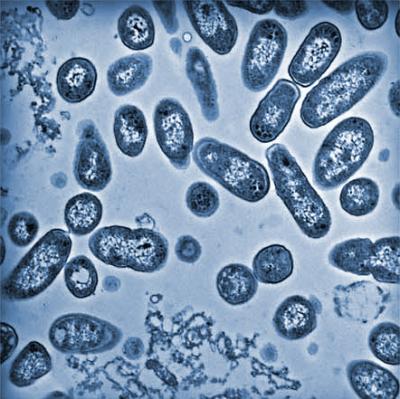|
From rxpgnews.com Bacteriology
Salmonella bacteria, infamous for food poisoning that kills hundreds of thousands worldwide, infect by stealth. They slip unnoticed into and multiply inside macrophages, the very immune system cells the body relies on to seek and destroy invading microbes.
The discovery of the protein, dubbed STM3117, is detailed today (Sept. 29) in The Journal of Biological Chemistry. Knocking out the gene that codes for STM3117, the researchers subsequently crippled the microbe's ability to multiply inside macrophages. Shi and colleagues say the protein and two closely related proteins discovered in the study are similar in genetic sequence to those known to make and modify chemicals in the microbe's cell wall called peptidoglycan. Drug and vaccine designers armed with this mouse-model information can target chemicals or immune responses that disrupt peptidoglycan synthesis and other processes linked to Salmonella's colonization of macrophages in humans, said Joshua Adkins, a co-author on Shi's paper and lead author of a related study in Molecular & Cellular Proteomics last month. A quick identification of these proteins, Adkins added, could help physicians assess the virulence of a given strain. The candidate proteins were winnowed from among 315 possibilities that emerged through a combination of techniques, culminating in measurements by Fourier-transform mass spectrometry, or FT-MS. A suite of FT-MS instruments customized by co-author and PNNL-based Battelle Fellow Richard D. Smith enabled the team to rapidly separate and identify many proteins at once even as macrophages were being infected. Most of the initial candidates were designated "house-keeping" proteins, or those whose numbers relative to other proteins remained more or less constant during the course of infection. But 39 proteins shot up in number during bacterial colonization of macrophages, and of those, a handful or so--including STM3117--responded specifically to a macrophage protein associated with resistance to microbial infection. A standard assay called Western blot confirmed the abundance increases of that small group of proteins during infection. All rights reserved by www.rxpgnews.com |
